
Beyond Beauty 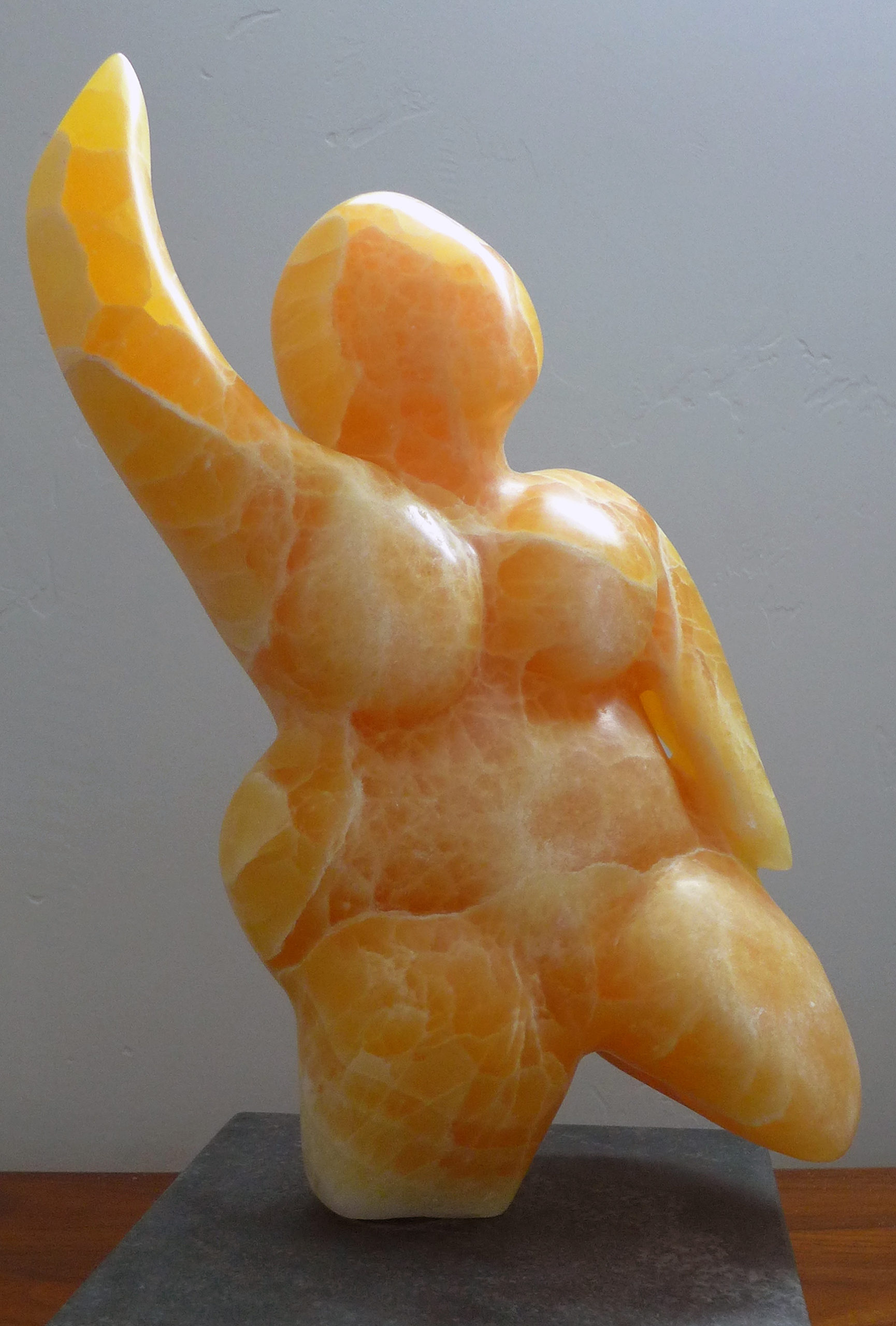
“Stone is place. As a sculptor, working the local stone can be a way of getting to know where you live, a means to come to terms with place.”
I wrote those words four years ago after moving from Sonoma, California to Salt Lake City, Utah. I was trying to settle in, become part of this place. I began with honeycomb calcite, a local stone, carving my first major piece in Salt Lake: V Kicks Up Her Heels. I committed to create a body of work in honeycomb calcite that would take three years to complete. Thirteen pieces from that period were shown in a solo exhibition, Beyond Beauty, at the Eccles Gallery at Salt Lake Community College in April and May of 2021.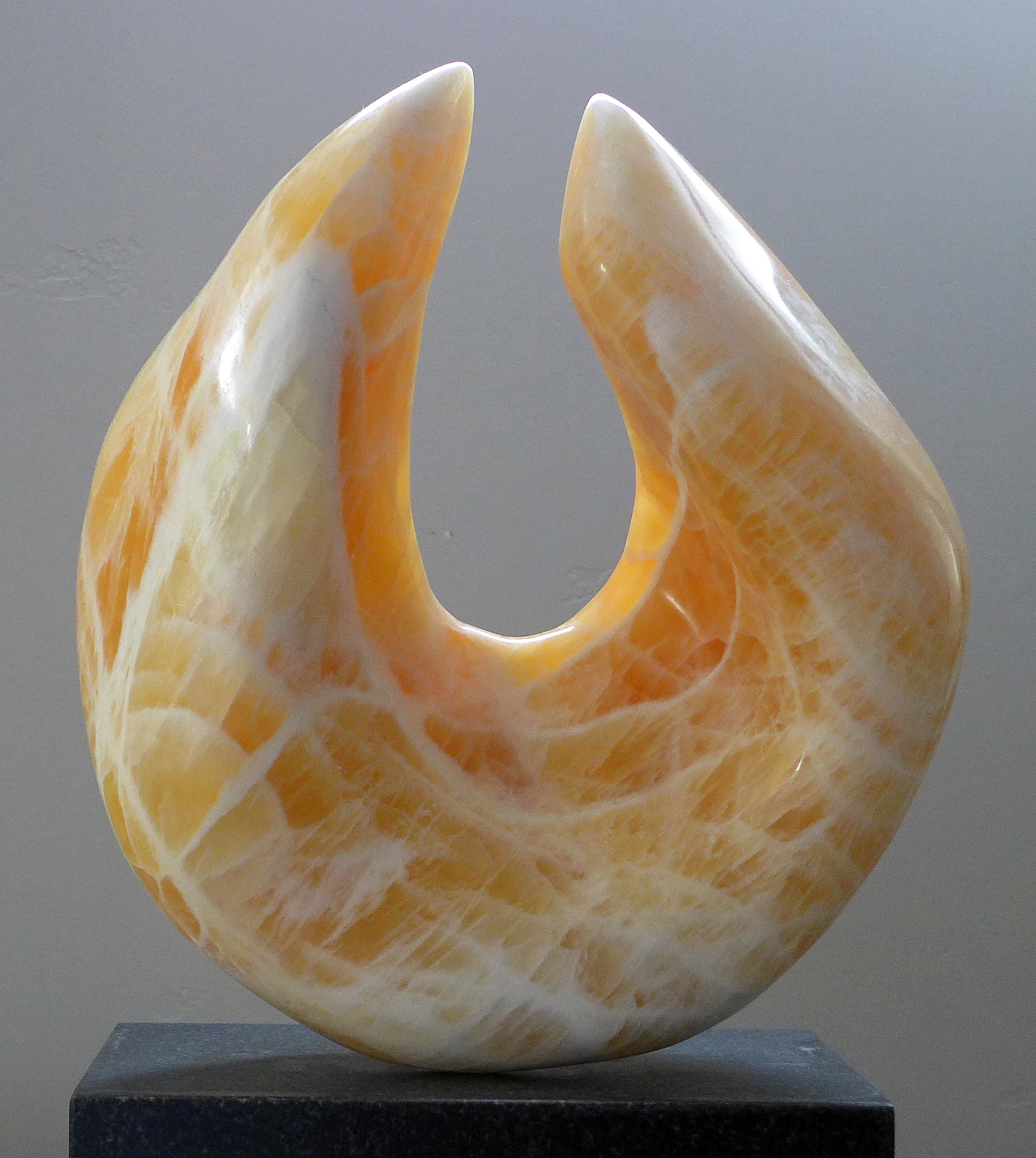
Mined in nearby Hanna, Utah, honeycomb calcite is known for its pure beauty, which is all that most people can see. I wanted to overcome this distraction and explore my own ideas and themes. First, I indulged the stone’s beauty with my abstract piece, Exuberant. I felt the simple shape could show off the stunning calcite characteristics. I worked the shape with diamond blades, burrs, and grinders, then hand-sanded to 3000 grit, sealed with Tenax Ager, and waxed to a high gloss polish with Renaissance white wax.
I learned carving from Zimbabwean teachers. As a result,
I like to incorporate storytelling and social justice in my work. Push Back (Malala) tells a story about activist Malala Yousafzai as she fights against those who would disallow education for girls. I only alluded to a face on the sculpture, since I find that details such as facial features easily get lost in this stone. 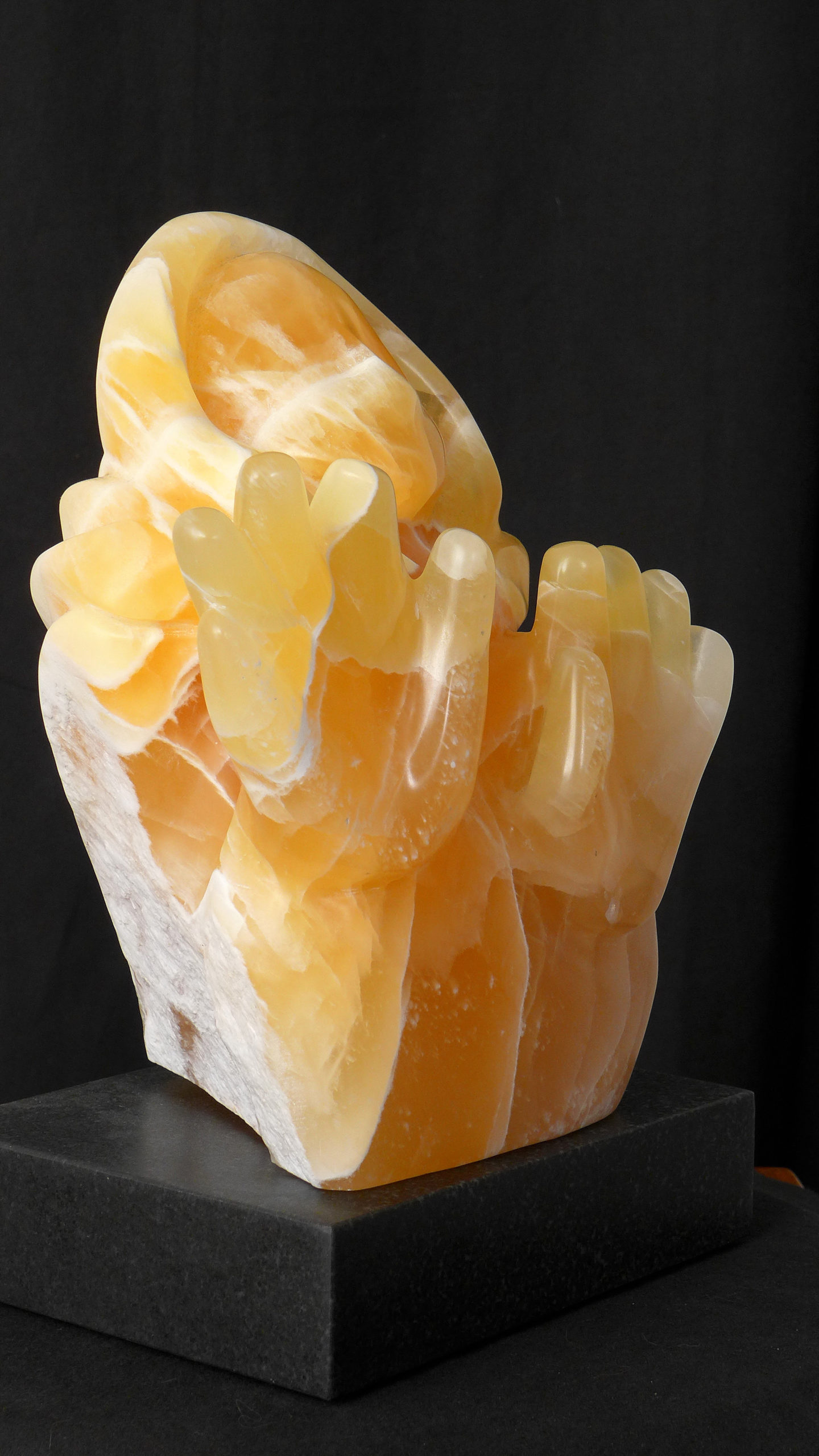
Texturing honeycomb calcite can draw the viewer’s eye where you want it to go. In Moon over Mayacamas, I use several textures to indicate the mountain range and its contours.
Working in relief is always a challenge for me but some subjects demand it, like carving gingko leaves on the bough. While developing this body of work, MJ Anderson introduced me to using paint on sculptures; subtle metallic tones that gave depth and dimension to my relief sculptures like Lil Gingko. (Show Lil Gingko here.)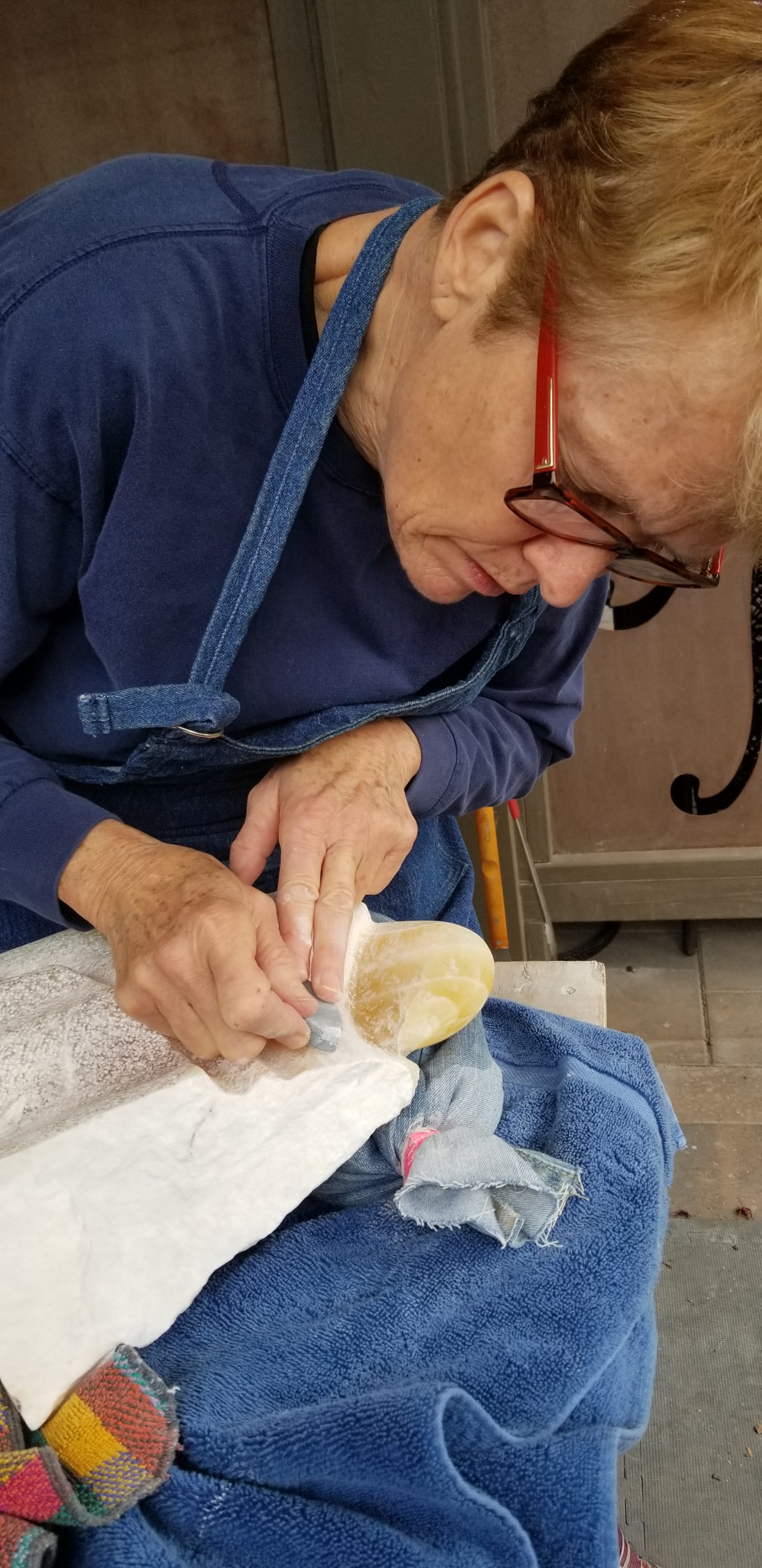
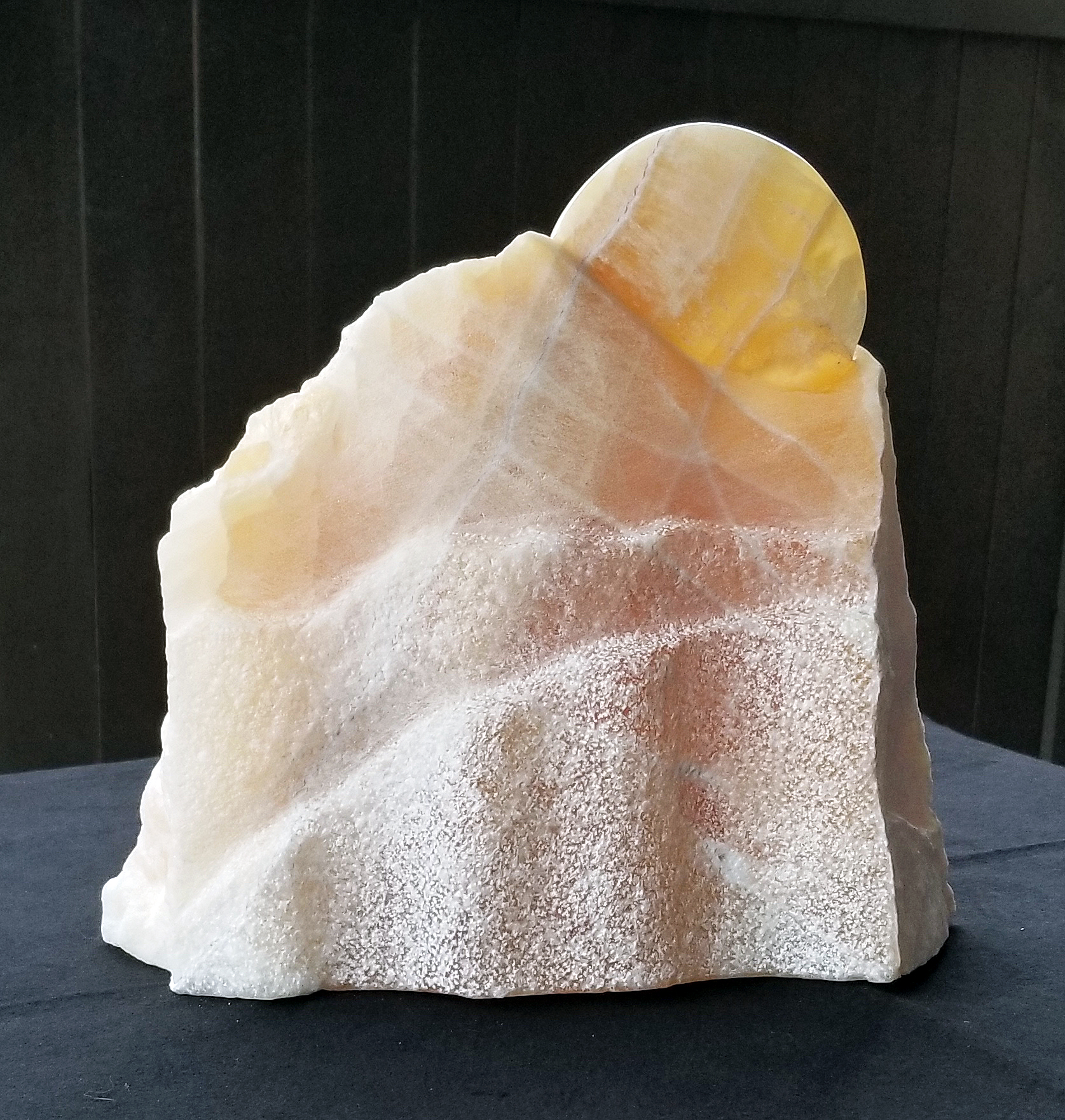
I love finding things to incorporate into my sculptures. Pre-pandemic, I scoured estate sales, flea markets, and salvage yards. I’ve got a great stash of rusted stuff that I’m always trying to work into stone sculptures. I found a discarded utility pole anchor along a nearby street. I immediately saw it as the leaves of an agave or maguey plant and wanted to carve a flower stalk to complete it. I went to Shamrock Onyx Mining in Hanna to find the right stone for Maguey Bloom. Of course, I found five and brought them all home. Once carved, I worked with my welder pals at SugarPost Metal here in Salt Lake to weld together my sculpture base, add weight to it, and build a good pin and holding mechanism for the tall and heavy flower stalk. (Show Maguey Bloom here and Close-up of base.)
In February of 2020, my wife and I made an emergency trip to Costa Rica to extricate her sister after a zip-line accident. While waiting for the air ambulance, we spent some anxious hours in the Museo de Jade. I found myself attracted to small, two-dimensional female forms and snapped reference pictures. Back home (with sister-in-law recuperating and rehabbing), I dug up a flat piece of scrap to create my impression of what I had seen at the museum. Honeycomb calcite became my jade. At the same time, I worked on a more Euro-classical female form. In both Düil and Ophelia with Hair on Fire, I utilized found objects to transform them from being direct rip-offs of existing sculptures to telling my own stories.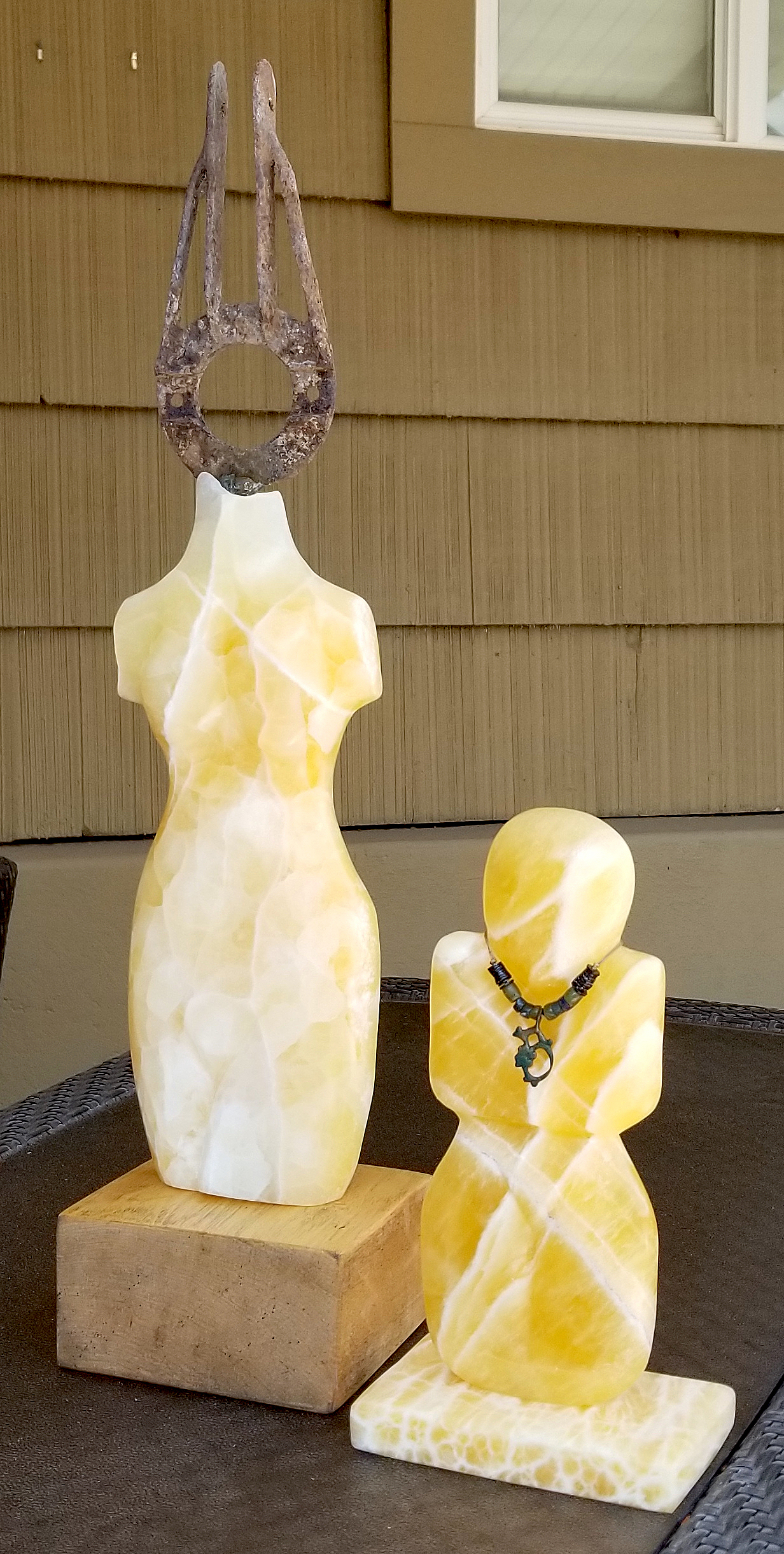 I often approach stone with a specific idea in mind, but I am always willing to let the stone decide the direction of a sculpture. As I got to know honeycomb calcite and its unique characteristics, I found myself drawn to stones that had a touch of dragon’s blood. Dragon’s blood is a term that miners use: it refers to that reddish vein of iron-rich material that can run through some calcite. As I worked the red plane, a wonderful oak leaf appeared. With Leaf on the Water, I imagine a leaf floating on a clear stream, its image refracted below. The base is actual limestone that naturally crusts over a bed of honeycomb calcite.
I often approach stone with a specific idea in mind, but I am always willing to let the stone decide the direction of a sculpture. As I got to know honeycomb calcite and its unique characteristics, I found myself drawn to stones that had a touch of dragon’s blood. Dragon’s blood is a term that miners use: it refers to that reddish vein of iron-rich material that can run through some calcite. As I worked the red plane, a wonderful oak leaf appeared. With Leaf on the Water, I imagine a leaf floating on a clear stream, its image refracted below. The base is actual limestone that naturally crusts over a bed of honeycomb calcite. 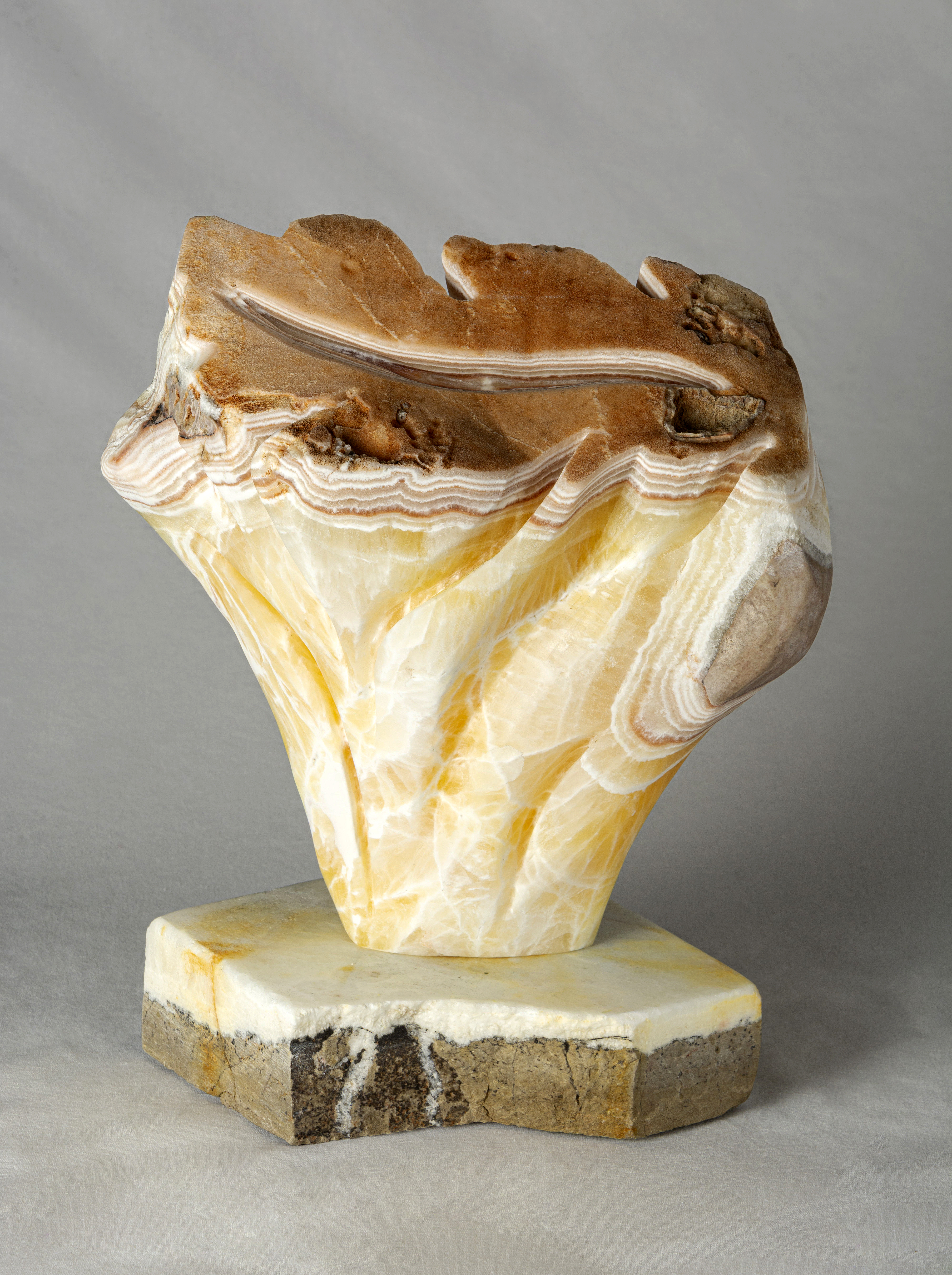
Working honeycomb calcite exclusively for a couple years taught me to see past the glamour of the stone and reveal the story or sculpture within. I learned what subjects better lend themselves to the stone, how to simplify my design to maximize its impact, to understand the value of opacity or translucency, when to use which products, and how to embrace happy accidents. While my work incorporates other stones again, the knowledge gained and the themes explored during this period make me know that I will always sculpt honeycomb calcite. Oquirrh Moonrise/Ghost Owl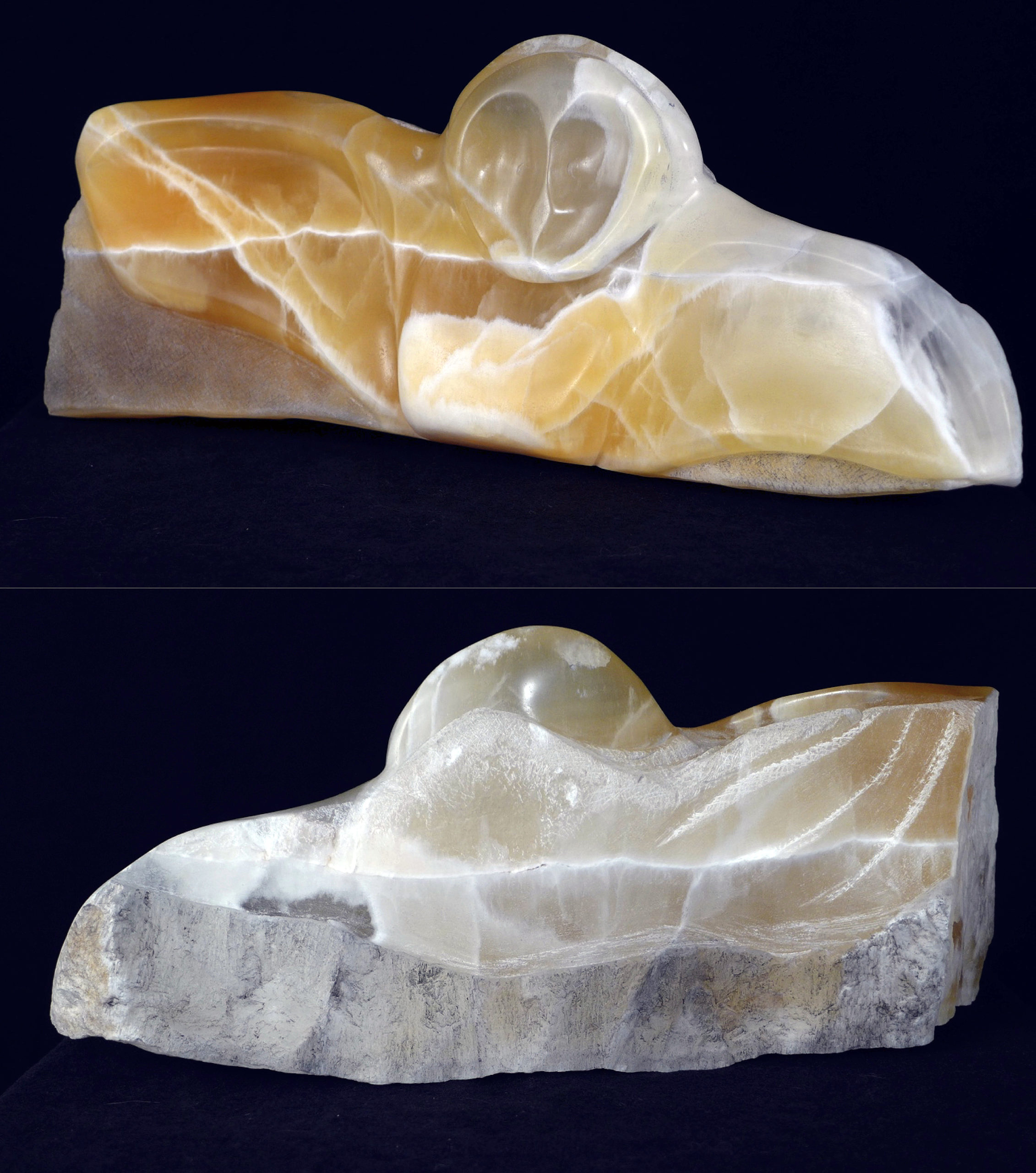




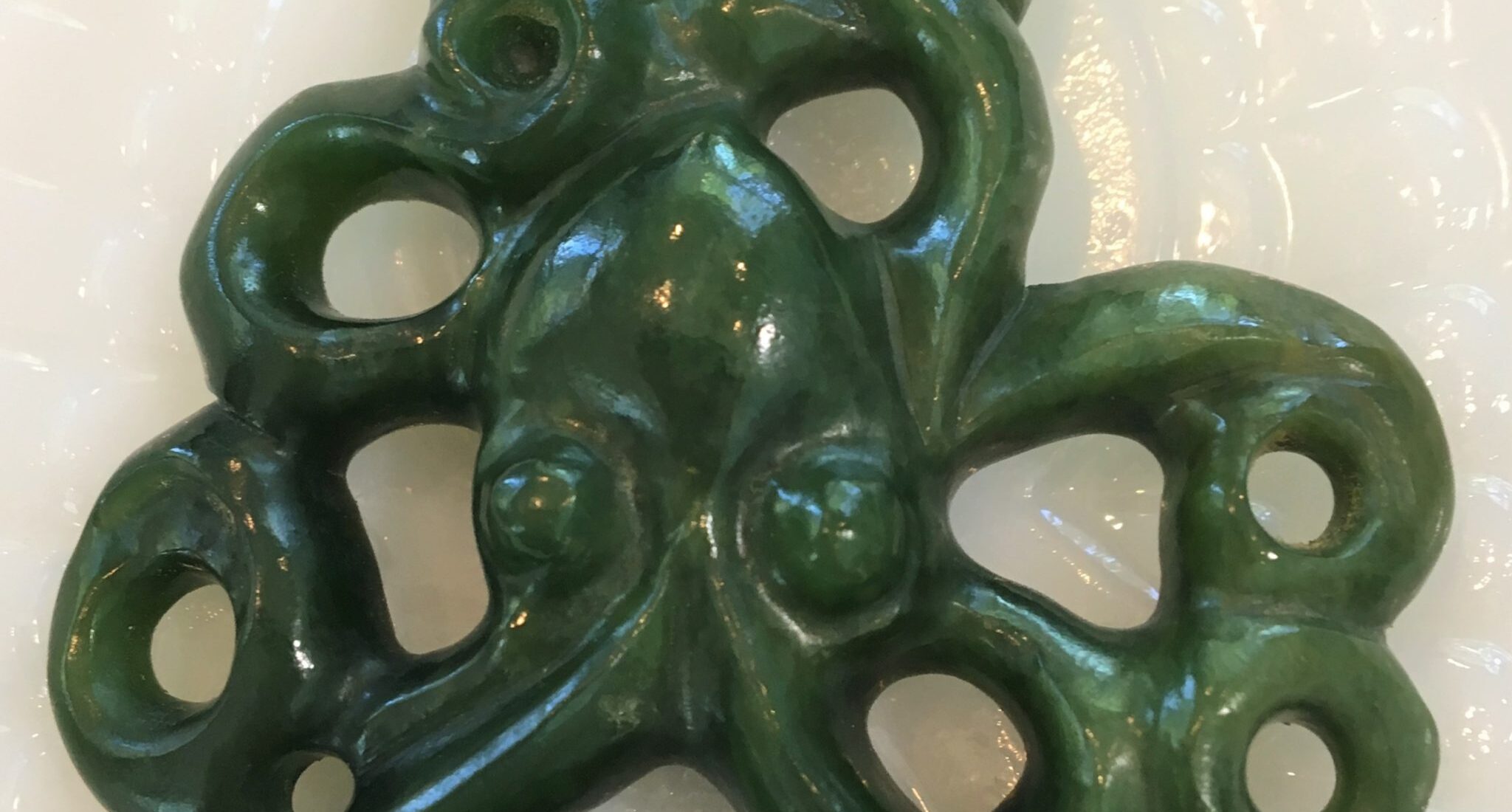

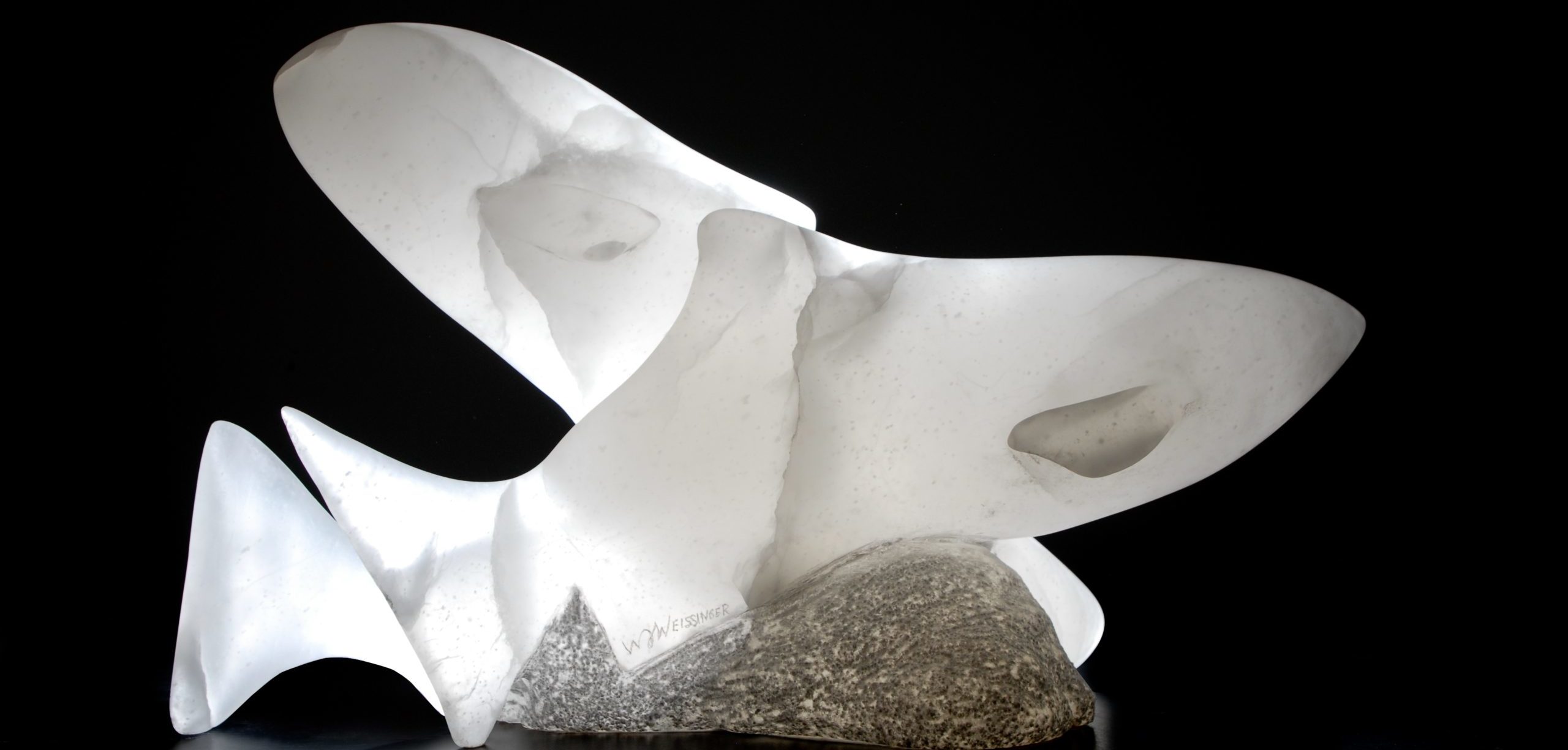
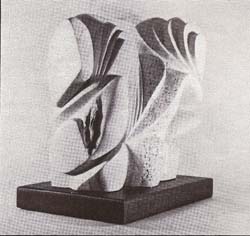
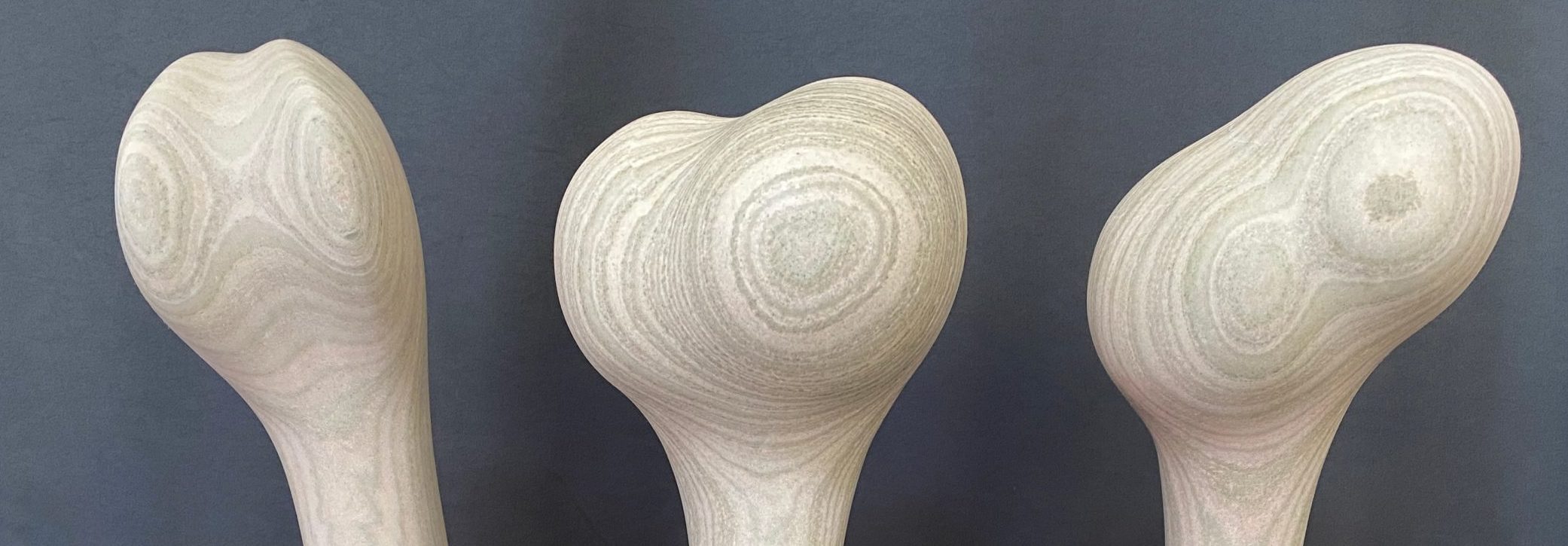


We need some kind of descriptive text here.